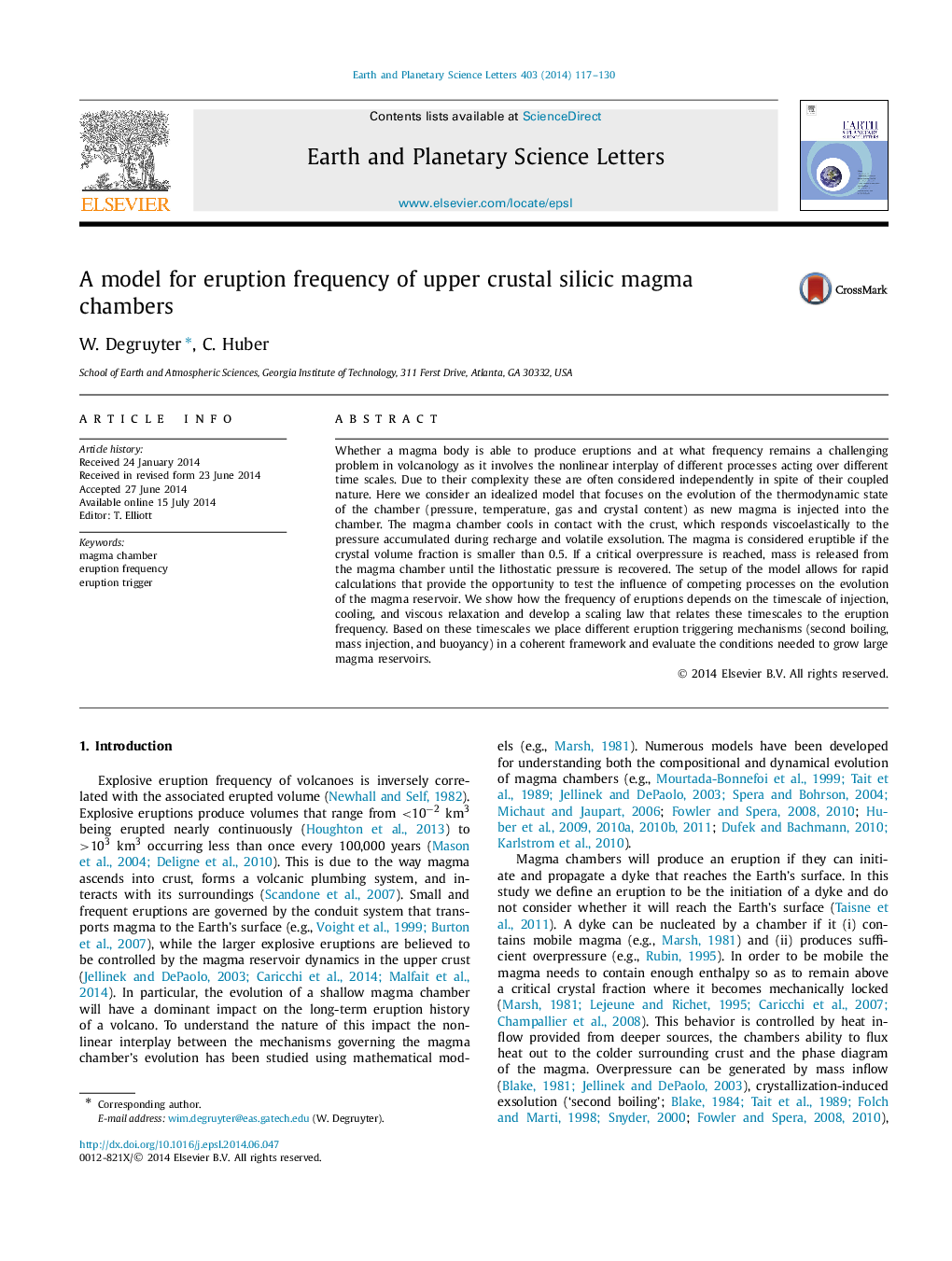| Article ID | Journal | Published Year | Pages | File Type |
|---|---|---|---|---|
| 6429093 | Earth and Planetary Science Letters | 2014 | 14 Pages |
â¢A self-consistent model for the evolution of upper crustal silicic magma chambers is developed.â¢An expression for eruption frequency as a function of mass injection and radius is derived.â¢A coherent framework for eruption triggering mechanisms is provided.
Whether a magma body is able to produce eruptions and at what frequency remains a challenging problem in volcanology as it involves the nonlinear interplay of different processes acting over different time scales. Due to their complexity these are often considered independently in spite of their coupled nature. Here we consider an idealized model that focuses on the evolution of the thermodynamic state of the chamber (pressure, temperature, gas and crystal content) as new magma is injected into the chamber. The magma chamber cools in contact with the crust, which responds viscoelastically to the pressure accumulated during recharge and volatile exsolution. The magma is considered eruptible if the crystal volume fraction is smaller than 0.5. If a critical overpressure is reached, mass is released from the magma chamber until the lithostatic pressure is recovered. The setup of the model allows for rapid calculations that provide the opportunity to test the influence of competing processes on the evolution of the magma reservoir. We show how the frequency of eruptions depends on the timescale of injection, cooling, and viscous relaxation and develop a scaling law that relates these timescales to the eruption frequency. Based on these timescales we place different eruption triggering mechanisms (second boiling, mass injection, and buoyancy) in a coherent framework and evaluate the conditions needed to grow large magma reservoirs.
